A few weeks ago, I was bound to crutches after fracturing the neck of my femur while running a half-marathon with Image’s fashion director at large, Keyla Marquez. This happened right before Paris Fashion Week for the men’s spring/summer 2026 season, which we both had plans to attend, and I was left with two options: resign myself to a Frida Kahlo summer, where I would work, make art and take visitors while injured from bed, or go to Paris on the crutches and hope for the best. I picked the latter, because I am insane.
The idea of crutches on cobblestone streets was comical, ridiculous and potentially dangerous. The idea of crutches during fashion week was criminal. As I hobbled around the city chasing the fashion week shuttle to the next show, or glacially made my way up two flights of marble stairs in an opera house to see the charming Bode presentation without causing further damage, the hollow metal crutches rubbed against the studs on my leather belt, or made it impossible to carry my belongings in anything but a vintage Prada fanny pack. Keyla dubbed this version of me “extreme sports Juju.”
The crutches were front and center in every experience this past week — the first thing I thought of, the first thing people noticed. They were a nuisance and an obstacle, yes, but also a punchline and an ice breaker. Both the French and the fashion people looked at me like, “Girl, you good?” No, guys, I was not good. But the crutches were, for better or worse, my accessory this season, which made me hyper-aware of the accessories on the runway too. A seemingly small item despite being considered extra can completely transform how — and in my case if — you move through the world. I was obsessed, Baader-Meinhof-ed out, and in Paris last week everywhere I looked I saw accessories first and everything else second. There was the practical, the purely aesthetic, the absurdist combination of them all.
424
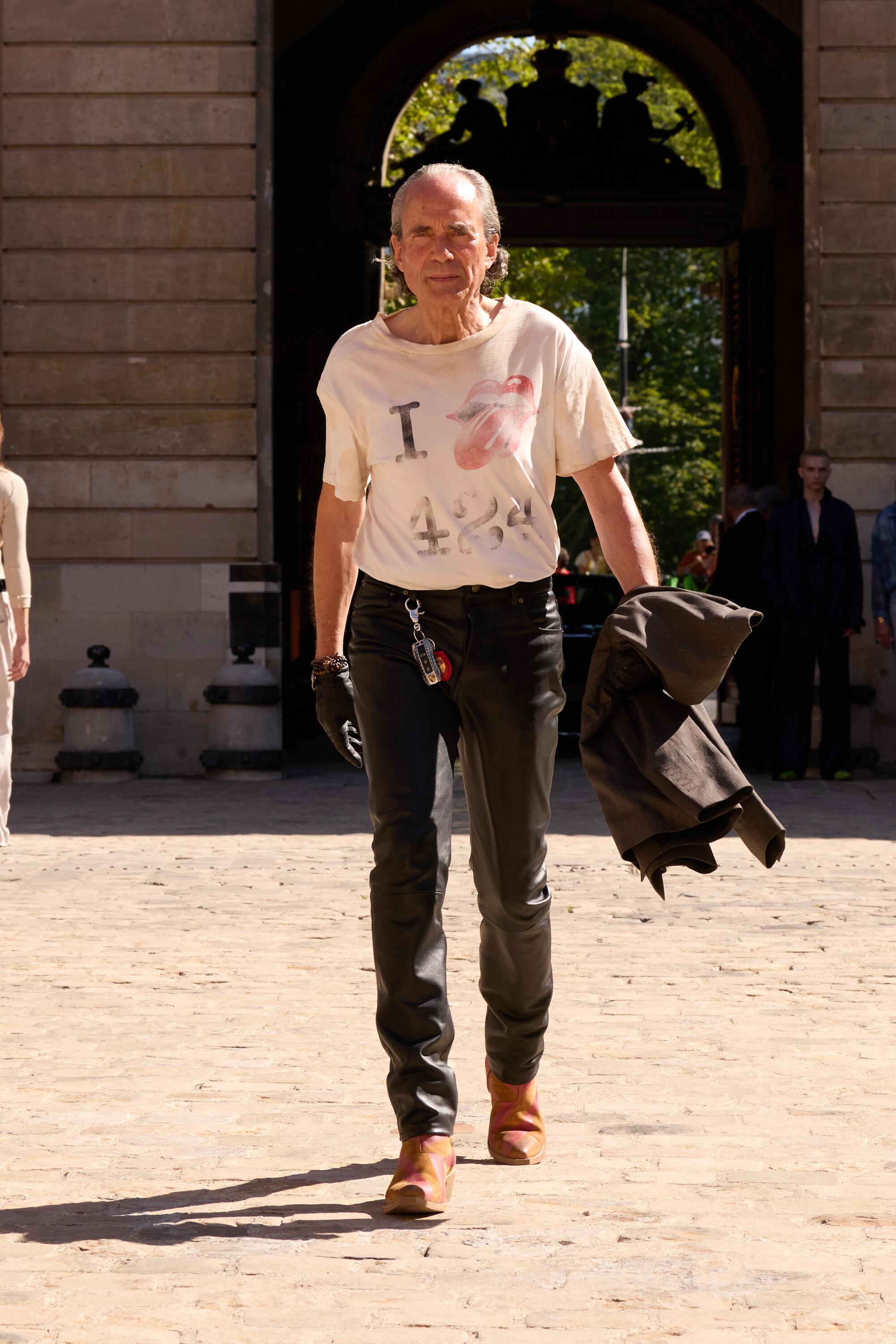
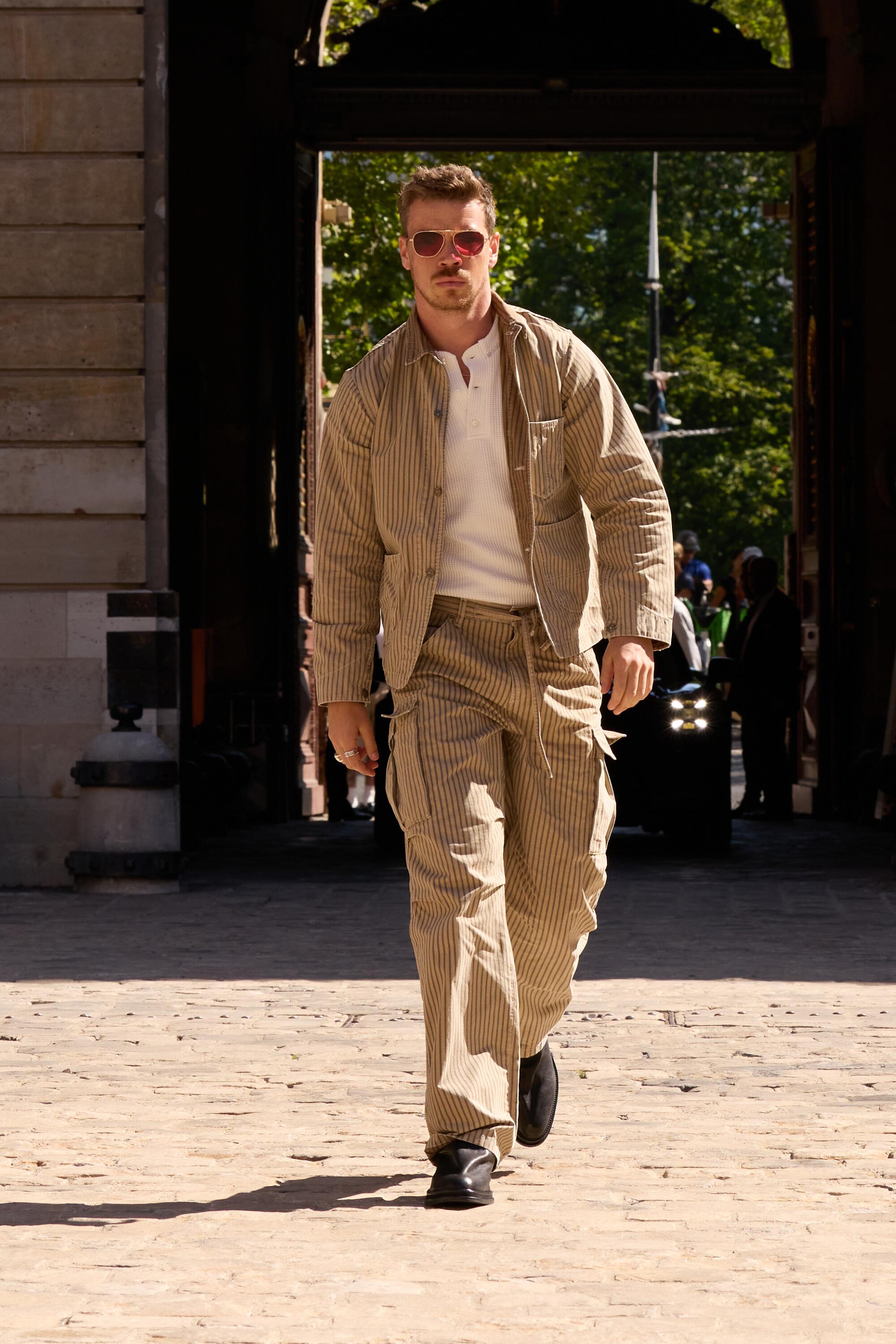
At 424’s runway show, the audience’s accessories defied weather. Despite it being near 90 degrees at the Monnaie De Paris, attendees showed up in fur stoles and leather chaps over jeans. L.A. stylist Marquise Miller wore intrecciato Bottega Veneta sunglasses to shield himself from the beating sun. An immaculately accessorized fashion boi from Toronto who wore gauzy scarves and rings on every finger accused me of faking my injury. The cult L.A. brand’s creative director Guillermo Andrade framed the collection around the greatest accessory of all: the car. More specifically, every generation of the Porsche 911.
The show kicked off with a line of Porsches throttling into the museum’s courtyard, with a gaggle of models including actor Will Poulter and Solange’s son Julez Smith pouring out of the cars (Julez’s grandmother, Ms. Tina Knowles, was in the audience supporting her grandson). For Andrade, the car is more than an accessory though — it’s a way of life. “When I’m at home I spend a bunch of time in my car,” Andrade told me after the show. “The car is my first experience of independence, of being free.” The last look, one of my favorites, showed an older model with bedazzled Porsche keys on a carabiner clip attached to slim leather pants.
Louis Vuitton
The first day of PFW was also Louis Vuitton Men’s day — the accessories final boss. The show was a glittering spectacle, as has become expected of Pharrell Williams’ tenure at the house. A chorus of screaming fans became a soundtrack to the pre-show moments, announcing the arrival of each celebrity sitting front row, including Beyoncé and Jay-Z. This season’s collection was inspired by modern Indian sartorialism, says Louis Vuitton. Held at the Centre Pompidou, the show’s set was created in collaboration with Studio Mumbai, an Indian architectural firm, and imagined as a life-size game of Snakes and Ladders. The show had stadium-style seating, and sitting on the third step up, I questioned if this was going to be it: the time I fell on my ass in front of Bradley Cooper and Pusha T. But luckily, I survived long enough to see new versions of the Speedy P9 bag in painted stripes and gold embroidery, and a crocodile steamer workwear bag in a patent, deep blue indigo.
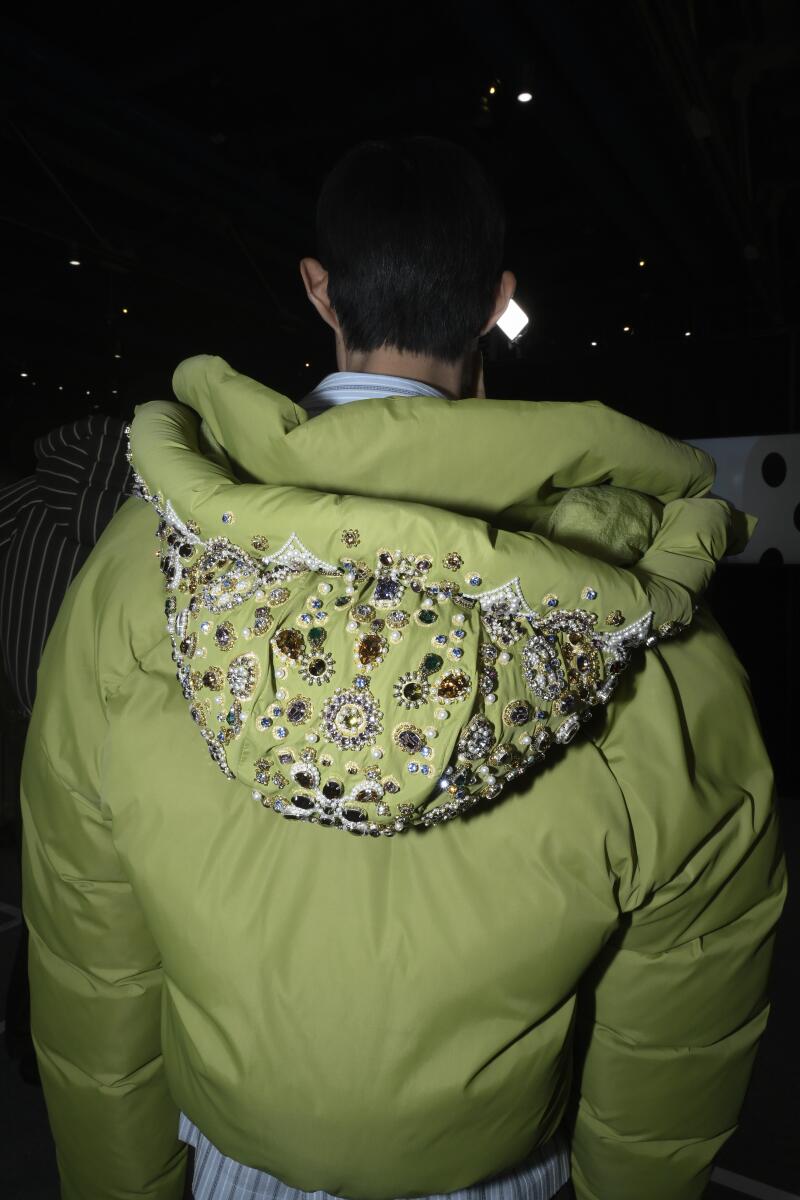

(Louis Vuitton)
There were the Louis Vuitton trunks, of course, being rolled by models in workwear-inspired gear down the runway. Some versions were encrusted with jewels in paisley patterns, taking on an antique feel, others were clear and hot pink. The thing I can’t stop thinking about, though, is the slouchy Louis Vuitton yoga bag in a violet hue, styled with a yoga mat of the same color. Seen on a model wearing green cargos, puffy flip-flops (another accessory of note this season) and a baby blue bomber, the bag was shown in checkerboard canvas with leather trim.
Issey Miyake



(Frederique Dumoulin-Bonnet)
Paris was hot. And most of what I wore was in conversation with the heat and my crutches: flat shoes, unfussy bags — anything that went with aluminum and rubber. I physically and spiritually could not wear anything that felt intrusive or unnatural. Issey Miyake Men’s understands functionality, but it also gets tribal. Dressing for that deep, inner part of yourself that yearns to connect to your own history and body. This season’s Issey Miyake show felt like the club. It started and ended with a full-bodied dance performance, and the accessories felt both organic and freaky enough for a dance floor — from a perfect leather belt bag to sunglasses that fanned out with multiple colored lenses to biker caps in soft knit.
Dries Van Noten
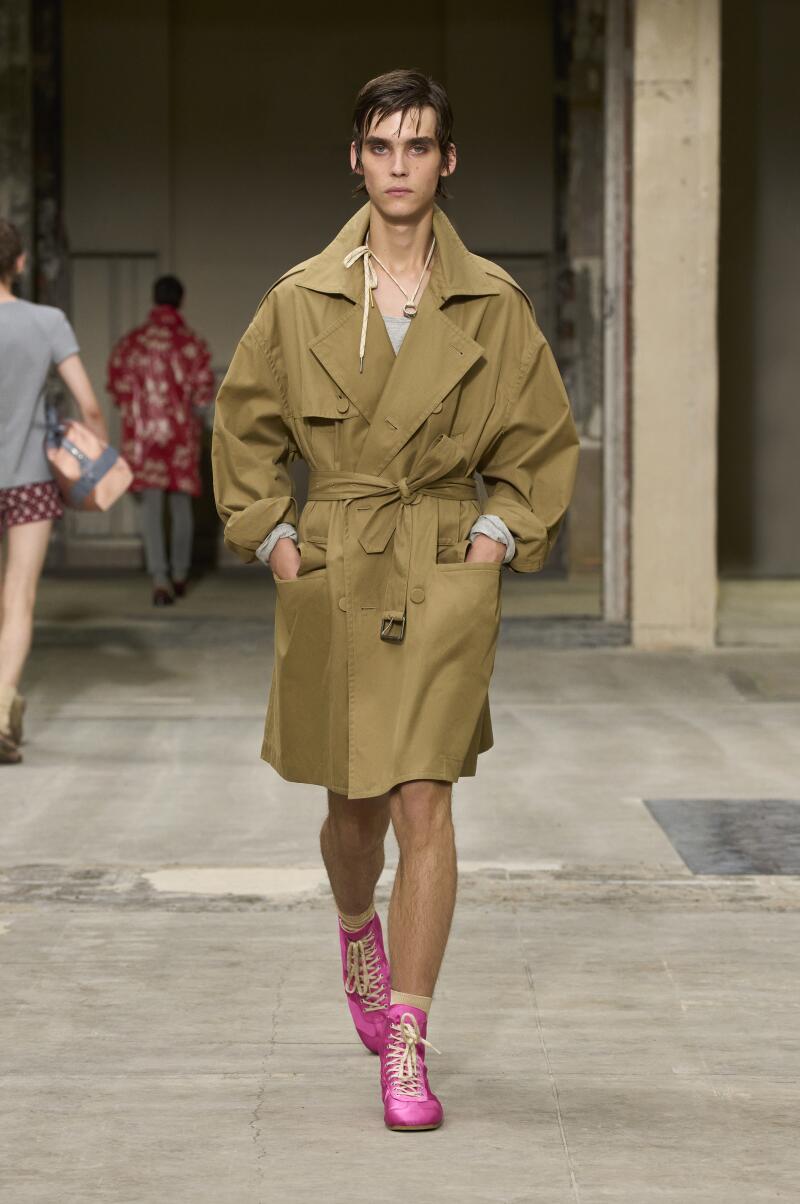


(GoRunway) (Ulrich Knoblauch)
Next up was Julian Klausner’s debut for Dries Van Noten Men. The whimsical, emotional accessories in this show rewired my neural pathways. There were satin boxing boots in hot pink and periwinkle. Patchwork floral sarongs styled over suit pants. Long sustainably-sourced seashell necklaces that looked like talismans. Oversized bowler bags in unlikely color combinations like salmon and charcoal, brown and black, dusty rose and camel, taupe and olive. Cumberbunds, even. The accessories in this collection lived somewhere on the spectrum between sophisticated and spirited — inspired by a morning on the beach after staying up all night at a party.
Rick Owens

A girl never forgets her first Rick Owens runway. The SS26 men’s show, called “Temple,” was in conversation with Owens’ retrospective at the Palais Galleria, “Temple of Love,” which references his early years in L.A. as the genesis of his work. “The exhibition tracks the pursuit of glamour and sleaze that I was looking for on Hollywood Boulevard, and eventually, improbably, ending up in a Paris museum,” Owens writes in the show notes. For the runway show, models descended from a temple built out of scaffolding before dipping into the fountain at Palais de Tokyo.
Such a part of the Rick experience is the crowd, a band of fashion weirdos clad in Kiss boots, and standing among them in crutches felt natural in this context. Maybe even something someone would do purposefully at a Rick show for the vibes alone. His shoe designs have been inspired by medical support devices for years, continuing this season with splint-inspired sandals, so I mean, why not? It was here that I spotted another fashion victim in crutches. We walked by each other and half-laughed, touching crutches like a fist bump before he claimed me as his “sister.”
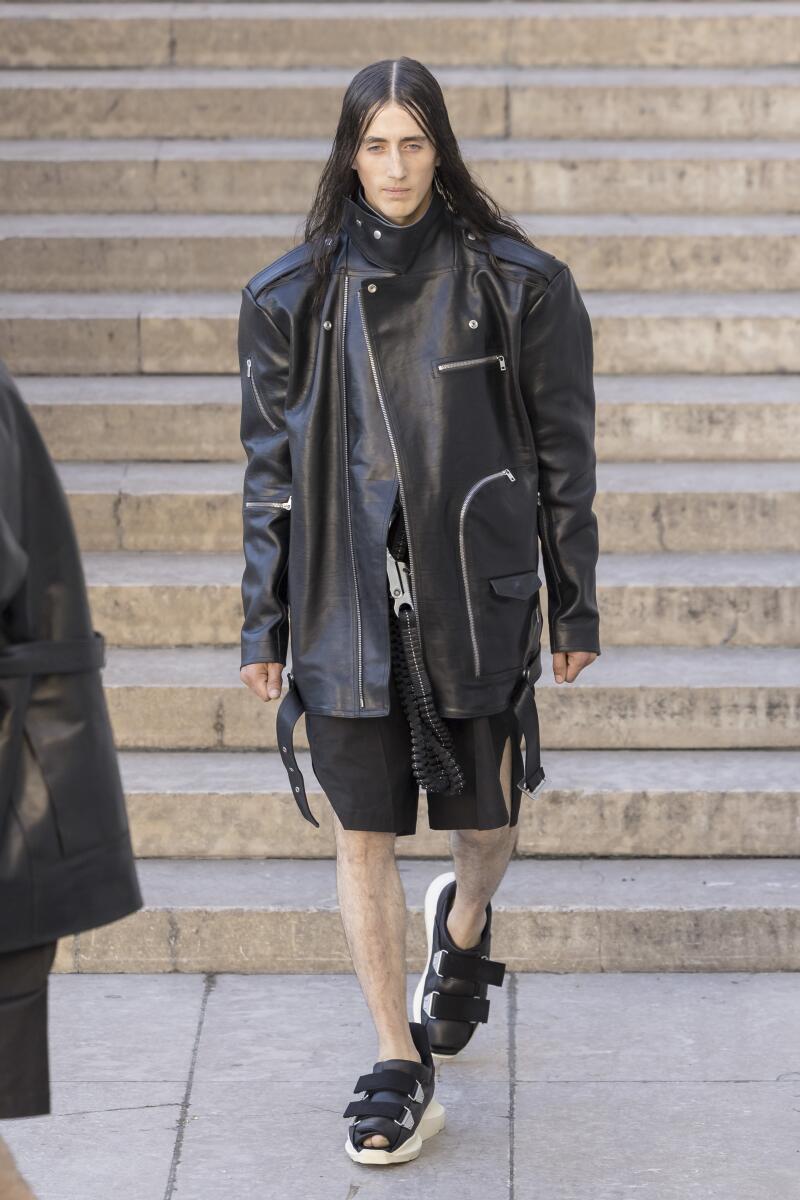
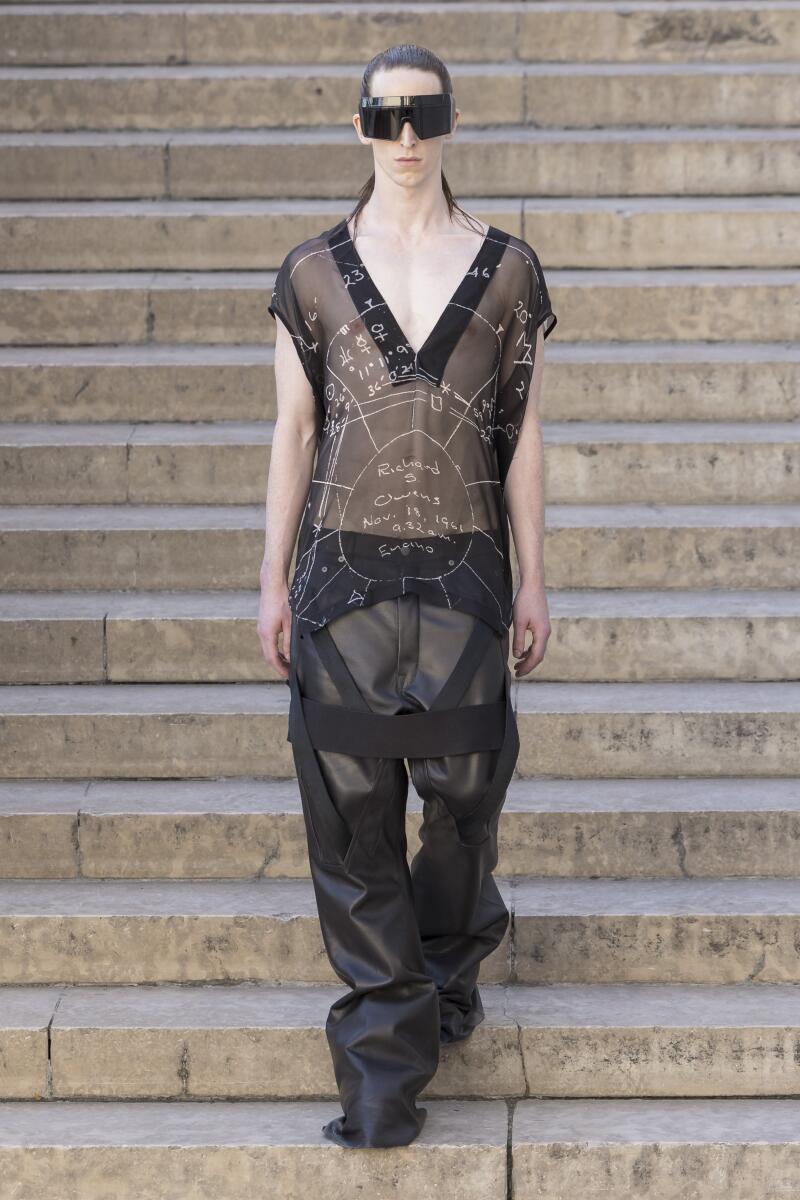
(OWENSCORP)
Other stand-out accessories were shield wrap-around sunglasses, and the extra-large carabiner clips on harnesses that helped hoist models onto the Temple for the show’s spectacle of a finale.
Dior

The next day, Keyla and I watched Jonathan Anderson’s Dior debut via livestream from our Airbnb while I elevated my leg, and even through the screen, the accessories screamed at us. It was the details at Dior that spoke volumes — subtle pop-culture references, the number of pleats on a pair of giant cargo shorts, the messy styling of a necktie. The look fell somewhere between 18th-century French noble and mid-aughts California skater boy. The high-top wrestling-style sneakers worn with the green cargos and the yellow “Dracula” cross body messenger bag. Voluptuous bow ties and cravats worn scrunchily with fisherman sandals and socks. At some point I just yelled across the room: “Keyla, the backpacks!”

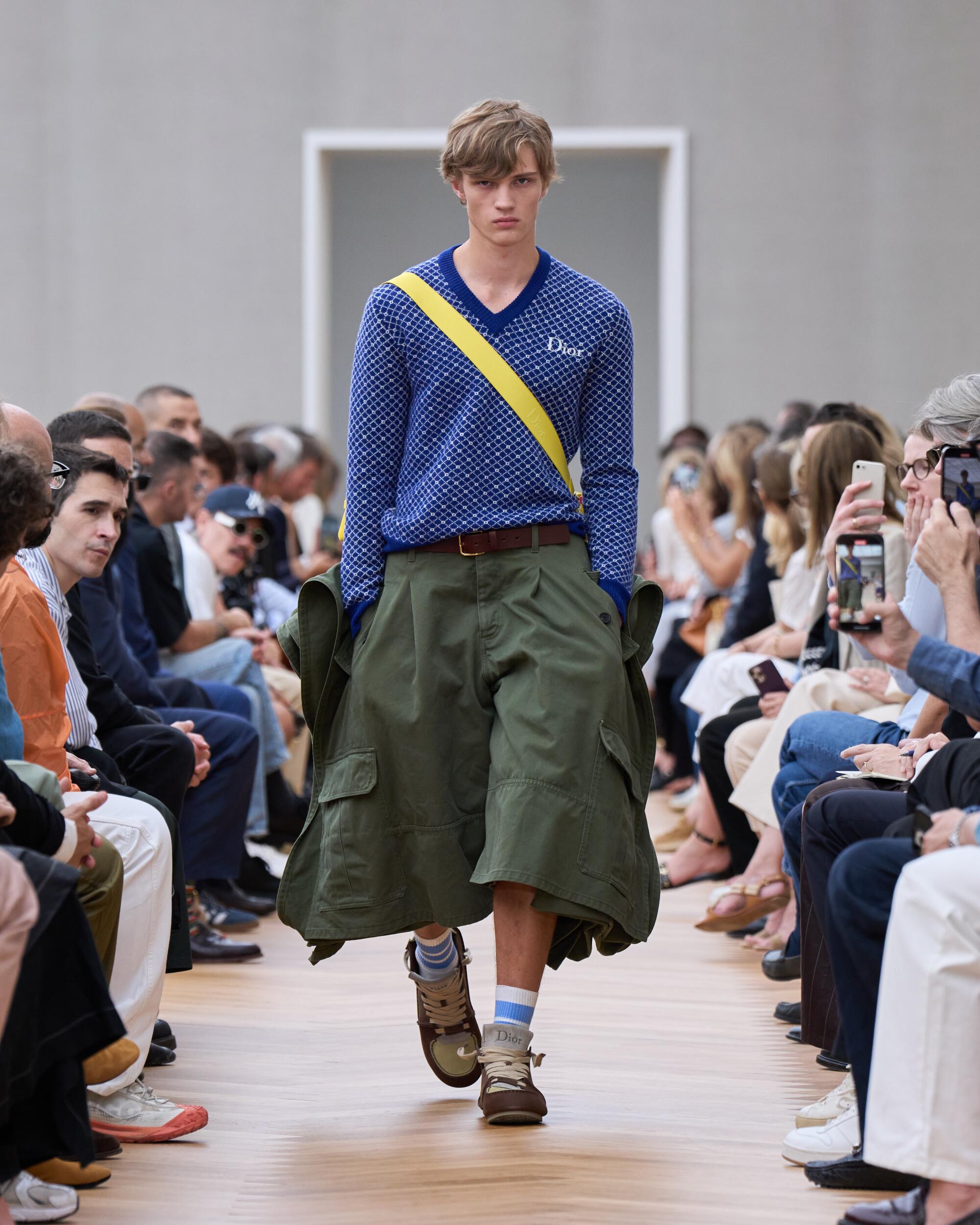
Kiko Kostadinov
The Kiko Kostadinov show was our last stop of the season before flying back to L.A. Almost six days into fashion week, my crutches started to feel like an extension of self. Still, making it to the second floor of a parking garage venue for the show was a precarious mission. The collection though — which spanned work wear, loungewear and evening wear, inspired by day-to-night in a fictional island town — was worth it. For the brand, the collection’s centerpiece was the materials: twill, mesh, kasuri cotton, leather, jacquard, wool. My focus was on the smaller things. Toe socks with sandals. Tabi Asics. An ultra-thin belt with silver grommets that was also a waist bag. A sky-blue scrunched fabric belt chain. Idiosyncratic charms on belt loops and suit jacket pockets. The collection spoke to the futuristic-hippie sensibilities that live unshakably inside of me, leftover from a past life. And that’s what accessories have the opportunity to do — communicate where exactly you are right now, or remind you of where you were. They have the potential to be more personal than anything else.
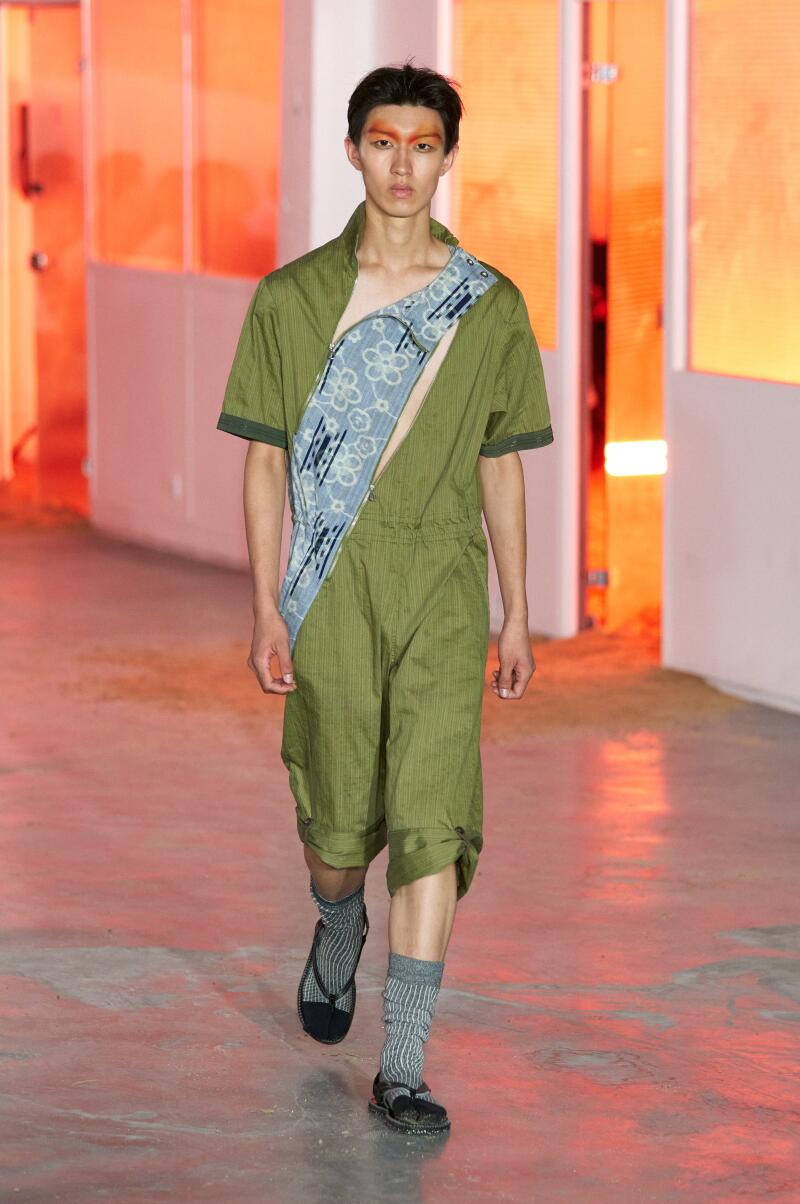
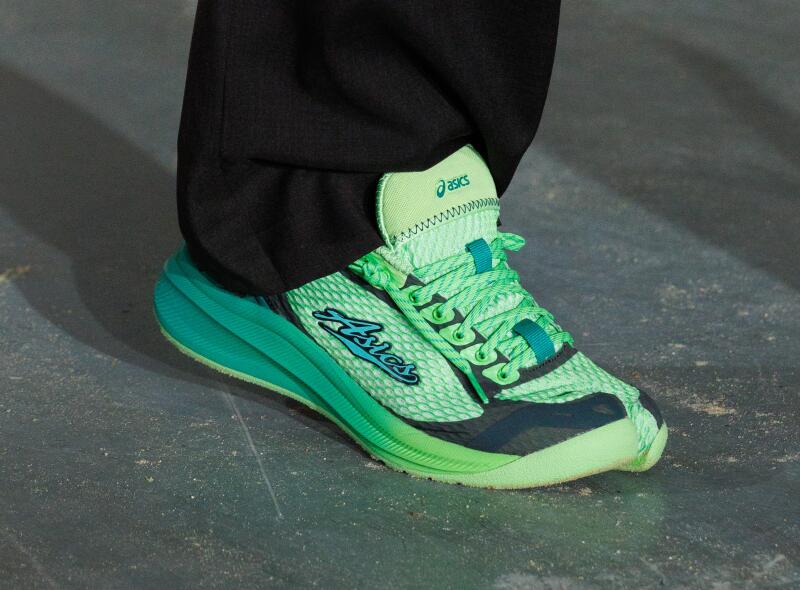

(Courtesy of Kiko Kostadinov)
As I gathered my crutches and called one last Uber to the airport, I knew what my accessory said about me. It was the same reason why I probably ended up on them in the first place, the same reason I was in France for fashion week with a broken femur: I don’t know when to give up.
Lead art photos: “Plate with waved pattern,” 1970, Iwate Museum of Art; Frederique Dumoulin-Bonnet; Ulrich Knoblauch; Courtesy of Kiko Kostadinov; OWENSCORP; Getty Images.
This story originally appeared on LA Times

